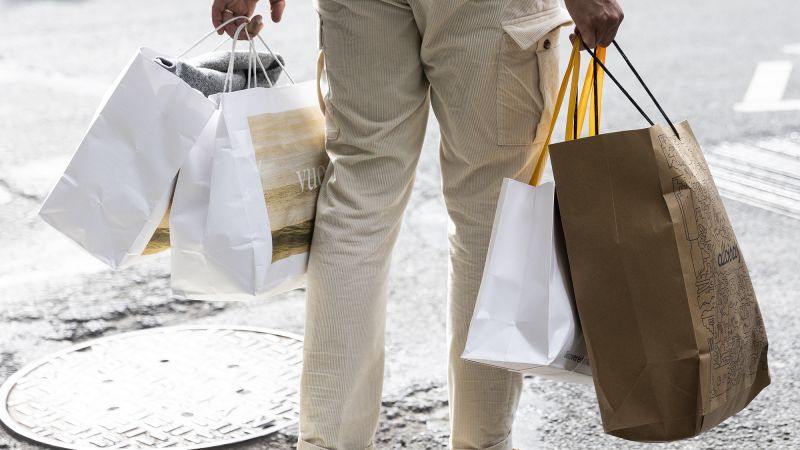Shopping hauls have become increasingly popular on social media, with influencers like Aria Liu amassing large followings by sharing videos of their shopping sprees. Liu, who regularly purchases clothing and makeup online, expressed that money doesn’t feel real to her when she shops online. This trend has been fueled by widespread product exposure on social media, algorithm-driven recommendations, and Buy Now, Pay Later programs. The average number of items per online transaction has increased in the Consumer Goods category, with the value of digital carts also experiencing a significant uptick.
Despite economic challenges, consumer spending has remained robust, with the US Commerce Department reporting a surge in retail spending in July. One factor contributing to this growth is the accessibility of Buy Now, Pay Later options like Klarna and Afterpay, which make it easier for individuals to make purchases without immediate cash. Research has shown a correlation between high levels of materialism and impulsivity and the use of BNPL services, potentially amplifying impulse shopping tendencies.
Influencers like Katie Fang on TikTok can heavily influence consumer behavior through their shopping haul videos, leading to increased pressure for viewers to participate in similar spending habits. Social media platforms are also evolving into retail spaces where users can seamlessly shop for products featured in videos without leaving the site. Platforms like YouTube and TikTok have introduced shopping features that allow content creators to earn commissions on sales. However, concerns have been raised about the impact of social media on overspending and consumer behavior.
Personalized recommendations, advanced algorithms, and AI technology are powerful tools that online retailers use to entice shoppers to make more purchases. Algorithms can offer tailored shopping experiences by analyzing user data and preferences. Companies like Amazon use AI-powered features to provide customers with personalized recommendations based on their previous purchases and sizing preferences. The shopping haul trend is also facing opposition from the “Underconsumption core,” a movement that advocates against excessive consumerism and promotes more thoughtful resource use.
There is a growing recognition of the environmental impact of the fashion industry and the dangers of overconsumption. Organizations like Remake are working to raise awareness about the social and environmental consequences of fast fashion. Research is also examining the potential dangers of social media, particularly for younger users, and questioning the influence of online platforms on consumer behavior. As more people become aware of the environmental consequences of overconsumption, there is a shift towards using resources more thoughtfully and maximizing the value of existing products before succumbing to the temptation of constant shopping.


